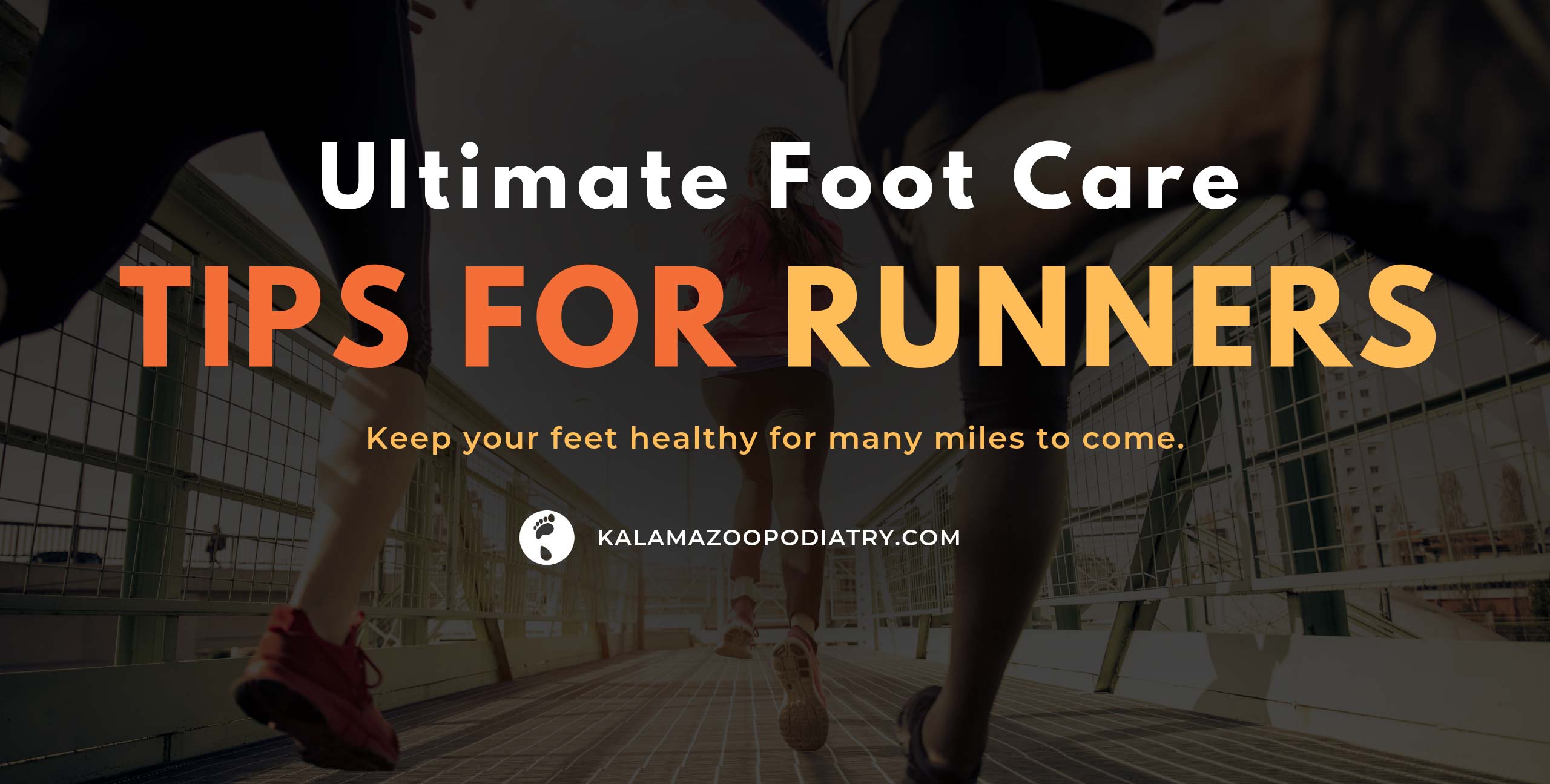It really should come as no surprise that you need to take good care of your feet and ankles. They do, after all, absorb a huge amount of impact forces whenever we walk, and even more so whenever we run!
In fact, during running, an average person will land on each foot with a force that equals to more than three times their body weight. For someone weighing in at 150 pounds, running a 5K race will entail about 3.5 million pounds of cumulative force impact to the feet. That’s a lot! But it definitely explains why running on a regular basis can easily lead to painful foot problems, including plantar fasciitis and blisters.
If you want to keep getting those miles in and competing in races, then you must stay on top of your foot health – no question about it. And though that’s often easier said than done, if you stick to it your feet will thank you, and you may even be able to perform better than you ever thought possible.
So, what should you do?
Well, just like you always pay close attention to your nutrition and hydration (or at least we hope you do), you should do the same when it comes to your feet by choosing the right footwear, minding your running form, and addressing any concerning symptoms as soon as you notice any.
The truth is that there are many ways you can fight back against the pain. If you are unsure where to begin, don’t worry – we’ve got you covered!

Make Sure the Shoe Fits
Having shoes that fit your feet properly makes all the difference in the world.
Before purchasing your running shoes, make sure you take into consideration the shape of your feet, the level of support you need, and the overall comfort you are looking for.
For instance, if you have flat feet, then you should opt for a higher stability shoe to support the arch and control overpronation. On the other hand, if you have high arches, you should go for shoes that offer lots of padding or cushioning to compensate for a relative lack of natural shock absorption.
Avoid shoes that are overly tight; these put too much stress on your feet and can cut off circulation. On the flipside, you should also avoid shoes that are too loose – these will increase the amount of friction on your feet, causing painful blisters.
The good news is that many athletic stores offer complimentary gait analyses and recommendations to help you find the best sneakers for your specific needs. If you need more assistance, we can also help you in this matter.
Get Rid of Old Shoes
Aside from finding the perfect fit, replacing old, worn-out footwear is also important. Check the insoles and outsoles of your shoes to see if they are worn out.
As a rule of thumb, running shoes should be replaced after they have seen 300-500 miles. A good way to determine if it’s time to ditch your old kicks is by how your feet feel after a run. If you often return home with painful feet, or if you feel your shoes are no longer providing the support or cushion you need, then it’s likely time for a new pair.
Use the Right Socks
Socks that don’t fit properly are actually a major reason blisters develop. The feet rub excessively against the fabric, irritating the skin to the point of blistering. Meanwhile, poor socks can also trap moisture and lead to discomfort and other issues, like athlete’s foot and fungal nails.
Choose socks that are both lightweight enough for comfort and breathable enough to allow moisture to escape from your perspiring feet. Look for fabrics that can help repel water or wick moisture away. It may take several attempts before you find the pair that is right for you – but once you do, you will notice the difference immediately.
Keep Your Feet Clean and Dry
We know most people are not comfortable talking about fungal infections, but this condition is very common among runners and active people alike. This is due to the dark and moist environment of your shoes and socks, which can become a playground for fungi to thrive.
So, it’s vital to wash and thoroughly dry your feet, especially between the toes, at least daily, as well as whenever you complete a running or exercise routine.
Moisturize Your Feet
While you should always keep your feet dry, it is also important to maintain some level of moisture. Otherwise, your skin will be more prone to painful cracks and bleeding.
We know that balancing the level of moisture in your feet can be a tough task, but you don’t want to foster a humid environment inside your shoe, as that is one factor that can contribute to the development of athlete’s foot. At the same time, dry skin is every runner’s enemy.
After running, and once you have washed and thoroughly dried your feet, apply a moisturizer (always avoiding those areas between the toes). Anti-chafing sticks can also be a helpful addition to your daily regimen.

Do Some Strengthening Exercises
A huge contributing factor to general foot pain is over-stressing parts of your foot that may not be as prepared as they should be, including your toes and your calf muscles. This can lead to a weaker running form, which in turn can lead to debilitating sports injuries or feet that hurt more than they should.
The best way to fight back against this problem is to start conditioning your feet for the hard work. Several tried-and-true exercises can strengthen the muscles at the front and the back of your feet. These include toe raises, walking on the front of your feet, stretching your Achilles tendons and calves, and more.
Pay Attention to Your Toenails
Another common foot problem often seen in runners is ingrown toenails. Although they may seem like minor annoyances at first, an untreated ingrown toenail can become quite painful, or even infected, in a relatively short timeframe.
Fortunately, you can often avoid painful ingrown or fungal toenails by keeping your nails trimmed short (but not too short), cutting them straight across (not curved) and then using a file to get rid of any sharp edges.
It is also important that you keep an eye out for any change in color or nail texture – these are often symptoms of trauma to the nail.
Don’t Wait to Get Professional Care
We certainly hope that, by following these tips, you will be able to steer clear of inconvenient, and even painful, foot and ankle problems while you are out there pounding the pavement. That said, we also understand that whenever people are active, injuries can still occur despite all preventative measures taken.
So inspect your feet every day. Keep an eye out for blisters, calluses, fungal nails, etc. and address the situation immediately by giving our office a call. The earlier you take care of the situation, the better your chances will be of eradicating the problem through simple conservative treatment methods. (This means, less time spent recovering, and returning to your running routine sooner.)
If you have any questions, or if you need to schedule an appointment at our Kalamazoo office, simply give us a call at (269) 373-1019. You can also connect with us online through our handy request form to have one of our staff members reach out you.
